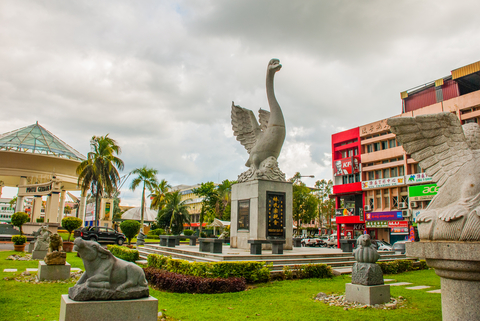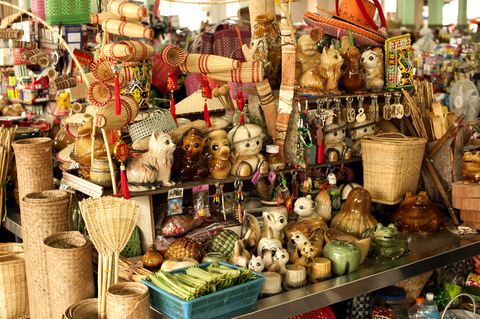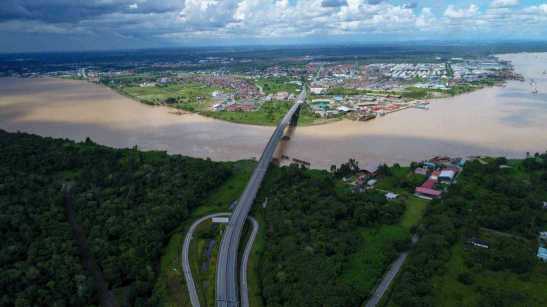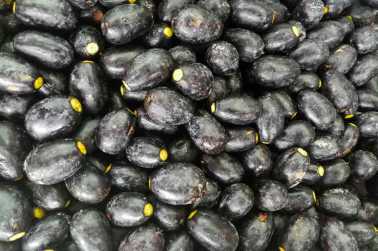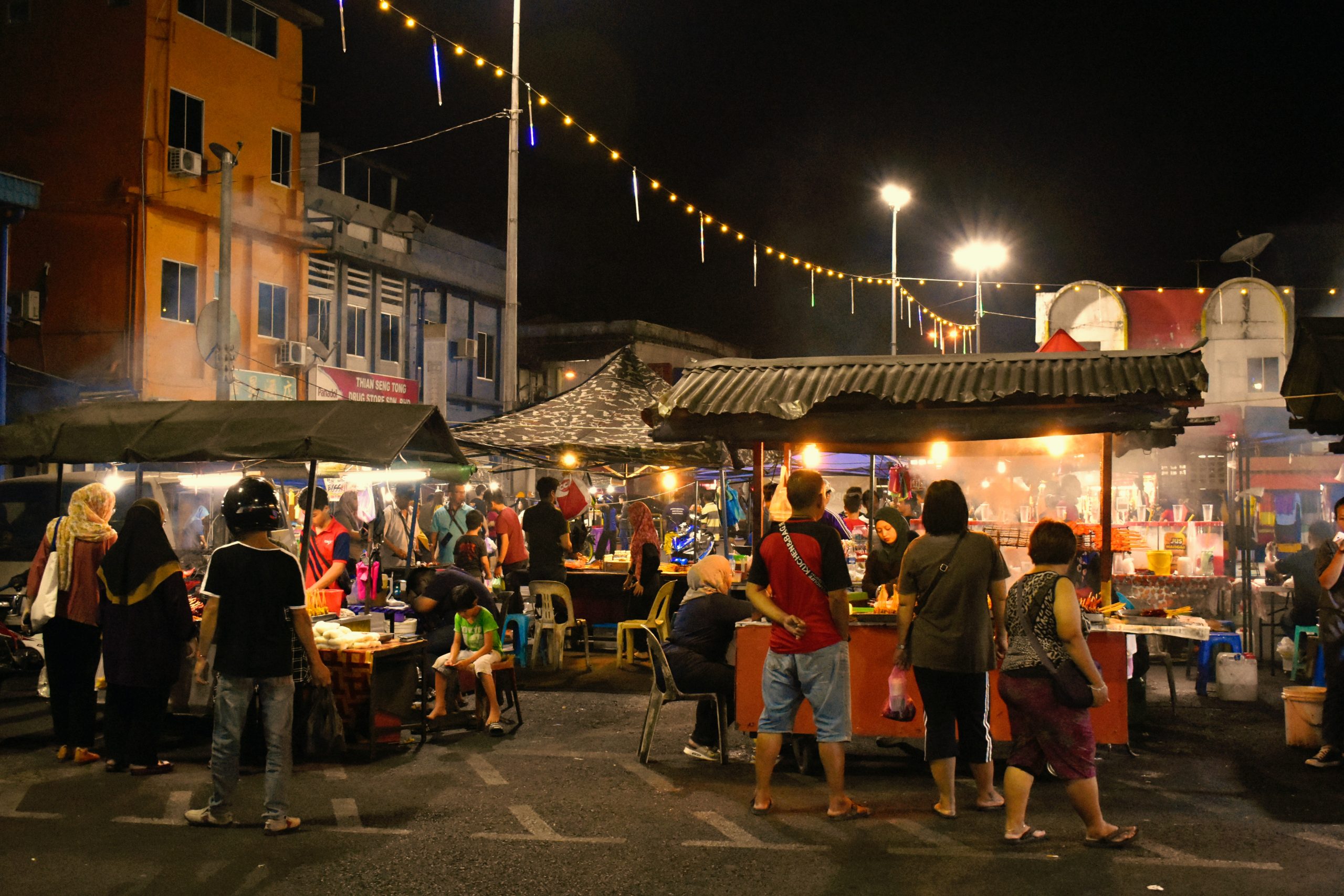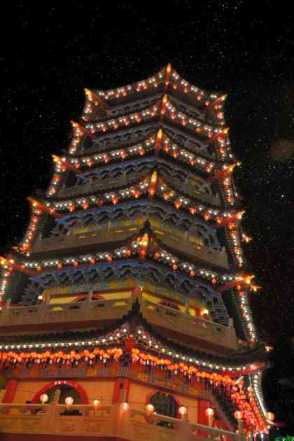HISTORY
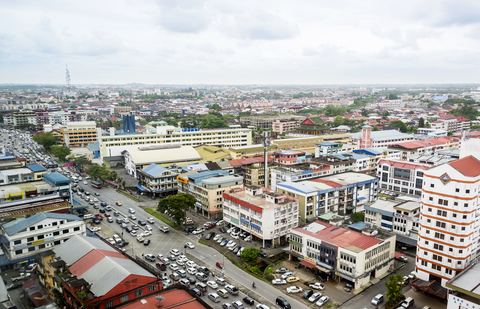
Aerial view of Sibu City Skyline with Temple
The history of the settlement of Sibu can be traced to the period when James Brooke began his rule of Sarawak in 1841 after he obtained the territory from Brunei. At that time the earliest settlers in the Sibu region were the Melanau people with smaller groups of Iban and Malays.
The village of ‘Sibau’ appears to have been named after the wild rambutans found in abundance along the river basin. This name apparently was given by the first Sibu Resident on June 1, 1873. Before that, the town was called ‘Maling’, after Tanjung Maling, a fishing and farming village, located at the confluence of Rajang and Igan rivers.
The earliest Chinese arrivals of Foochow origin can be traced to the 1860s with the building of two rows of shophouses around Sibu Fort which was set up to serve as an administrative center by the Brooke government. Soon after Kekh and Min Nan settlers were joined by groups of Chiang Chuan and Amoy settlers. According to the Sarawak Gazette, on 24 January 1871, there were 60 wooden shops in Sibu. In 1873, the third division of Sarawak was created which included the town of Sibu.
On 13 May 1870, the fort was attacked by 3,000 Dayaks under the leadership of a chief named Lintong (Mua-ri). The Dayaks tried to cut through the door of the fort but were not successful. Munan Anak Minggat was a prominent Iban leader who with his followers arrived in Sibu in the early 1890s.
He built a longhouse at Pulau Kerto, an island opposite Sibu. A loyal ally of the Brooke government he helped to quash local rebellions around Upper Katibas and Lupar rivers in the 1860s and 1880s. In 1903, he was the first Iban to operate a rubber plantation in Kuching and invested in shop-houses and land in the town.
On 10 February 1889, the town of Sibu was burnt to the ground, which caused the town’s development to falter until the next wave of Chinese settlement by Foochow, Hin Hua and Cantonese settlers from 1901 onwards.
The early development of Sibu is also intimately connected with the leadership of Wong Nai Siong, a scholar from Fujian who had learnt about Sarawak and the White Rajahs through his son-in-law, Dr Lim Boon Keng, a prominent social reformer in Singapore and Penang.
Disillusioned with the Qing Dynasty’s heavy handed approach against the Boxer Rebellion, Wong decided to search for a new settlement overseas, focusing on areas in South East Asia. Before arriving in Sarawak, Wong had looked unsuccessfully to other areas in Malaya and Indonesia to settle. With the approval of Charles Brooke, Wong extended his search for a new settlement in the Rajang basin.
In April 1900, Wong travelled up the Rajang River before he decided to choose Sibu as the new settlement for his Foochow clansmen. An agreement signed on 9 July 1900 between Wong Nai Siong and the Brooke government in Kuching was instrumental in the subsequent growth and development of Sibu.
On 21 January 1901, the first batch of 72 settlers arrived at Sibu and settled at the Sungai Merah area, about 6 km from the town of Sibu. On 16 March 1901, the second batch of 535 settlers arrived – the day that they settled is now known as “New Foochow Resettlement Day”. In June 1901, a final batch of 511 settlers arrived in Sibu, bringing the total number of Foochow settlers to 1,118.
Due to this influx of Foochow settlers, Wong Nai Siong was appointed as “kang choo” (port master) for the settlement in Sibu. The settlers planted sweet potatoes, fruits, sugar cane, vegetables, and coarse grains at the high ground and rice on wetlands.
Together with an American pastor, Reverend James Matthew Hoover, Wong was involved in the building of schools and churches in the new town, including the Methodist church in 1902 and Ying Hua Methodist school at Sungai Merah in 1903. In 1904, Wong opposed the sale of opium and the building of a gambling den in the Sibu area proposed by the Brooke government.
Soon after he was expelled by the Sarawak government and in July that year Wong and his family left Sibu. Rev. Hoover took over Wong’s role of managing the Sibu settlement and introduced the first rubber seedlings to Sibu in 1904. He built a Methodist church in 1905, which was later renamed Masland Methodist church in 1925. From 1903 to 1935, Hoover helped to build 41 churches and 40 schools in Sibu.
Hoover stayed at the Rajang basin for another 31 years until his death in 1935, Besides his pioneering work in rubber planting which was one of the main pillars of Sibu’s subsequent prosperity, Hoover is credited with the following:
- The very first steam launch
- The very first rice huller (1906)
- The very first girls’ school (1911)
- The very first generator (1912)
- The very first agricultural school (1913)
- The very first bicycle
- The very first ice making machine
- The very first circular saw
- The very first wireless telegraph machine
Today, the Hoover Memorial Square in the center of Sibu stands as a testimony to this remarkable pioneer in Sibu’s history.
Sibu’s development, as with the rest of British Borneo. was severely interrupted by the Japanese occupation of Sarawak during the 2nd World War. The Japanese military force installed a new Resident in Sibu in June 1942 and Sibu was renamed “Sibu-shu” in August 1942. After the Japanese surrender in 1945, Sibu reverted to colonial rule together with the rest of Sarawak which became a British crown colony.
On 22 July 1963, Sarawak was granted self-government and became one of the four founding members of the Federation of Malaysia established on 16 September 1963. On 1 November 1981, the local council which administered the town of Sibu was upgraded to municipal council status and its area of administration was expanded from 50 km2 to 129.5 km2
